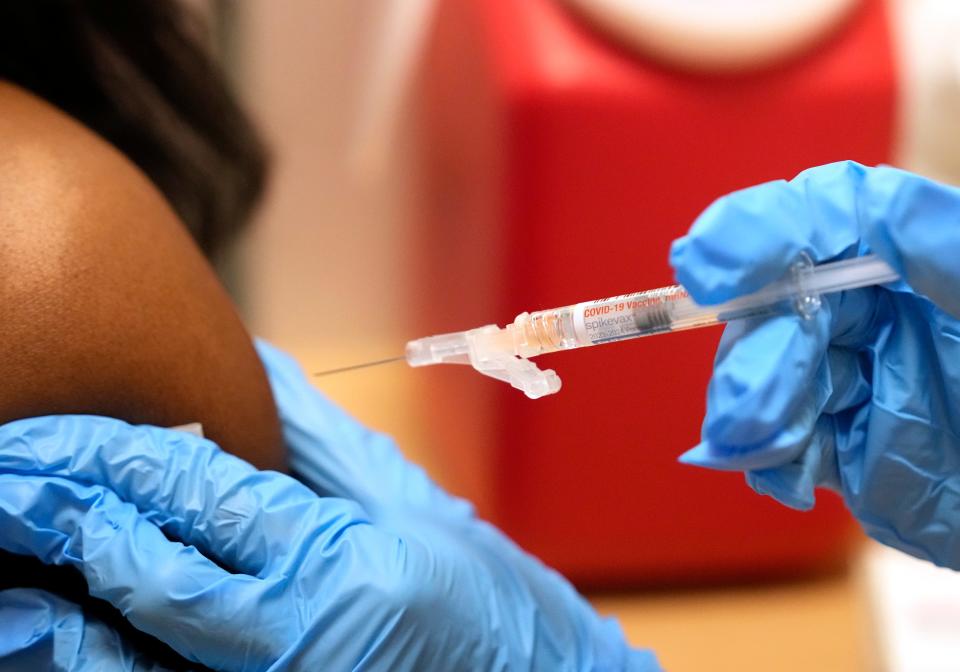A growing COVID-19 variant has taken off this holiday season. How to protect yourself.
Scientists are narrowing in on the fastest-growing COVID-19 variant, learning more about the strain that has coincided with a rise in cases as Americans head into the holidays.
The JN.1 variant now accounts for more than one-fifth of all cases, based on estimates Friday from the Centers for Disease Control and Prevention. In the CDC's latest Nowcast reporting period, cases involving this mutation make up between 15% and 29% of COVID-19 infections. The variant previously accounted for an estimated 8% of cases.
This uptick suggests that JN.1 could be more transmissible and better at slipping past people’s immune systems, the CDC said. Hospitalizations and deaths, indicators for COVID-19 spread, also remain elevated, with cases rising in the Midwest and mid-Atlantic. This follows a pattern of respiratory illnesses increasing in winter months with people indoors and visiting friends and family for the holidays.
“The narrative here is that JN.1 may be somewhat more contagious," Dr. Rebecca Wurtz, a professor at the University of Minnesota School of Public Health, told USA TODAY. "Thanksgiving happened, winter is starting to happen, and that’s probably what caused it to jump like it did."
BA.2.86 variant: This COVID-19 variant was rare. Cases have tripled over two weeks, CDC estimates.
There is no evidence that JN.1 causes more serious illness compared with other circulating variants. The latest COVID-19 vaccine and treatments are expected to work against JN.1.
The COVID-19 virus is constantly mutating, like any virus, and is bound to create more variants to survive. JN.1 was first detected in the U.S. in September. It had previously been classified with BA.2.86, or Pirola, a descendant of the omicron family, which some researchers early on worried could pose risks, but cases have recently declined in CDC estimates. In contrast, the original omicron variant overwhelmed hospital systems in 2022.
So far, it appears JN.1 doesn’t present a greater risk. Vaccination and previous infection also appear to help reduce the risk of serious illness from JN.1.
Dr. William Schaffner, a professor of infectious diseases at Vanderbilt University Medical Center, in Nashville, Tennessee, likened JN.1 and other subvariants to children and grandchildren of omicron.
“It’s likely to continue to dominate,” Schaffner said. “We anticipate it will be succeeded by other grandchildren, variants, down the road.”
Hidden hospital prices harm patients: Can this new pricing tool make a difference?

Schaffner recommends getting vaccinated as soon as possible. Ideally, people should get their shot before they go shopping, attend religious services, travel to visit family and visit older relatives who are likelier to get more sick from a COVID-19 infection. For those who are elderly, have chronic medical conditions, or are pregnant, he recommends masking in densely populated indoor areas as another layer of protection.
Experts emphasized that the rise of this variant is not a cause for panic.
“There are game-changing events that we’ve seen during the pandemic,” said Dr. John Moore, a professor of microbiology and immunology at Weill Cornell Medicine, in New York. “This has not been one of them.”
Eduardo Cuevas covers health and breaking news for USA TODAY. He can be reached at [email protected].
This article originally appeared on USA TODAY: New COVID-19 variant JN.1 is spreading fast. How to protect yourself,
